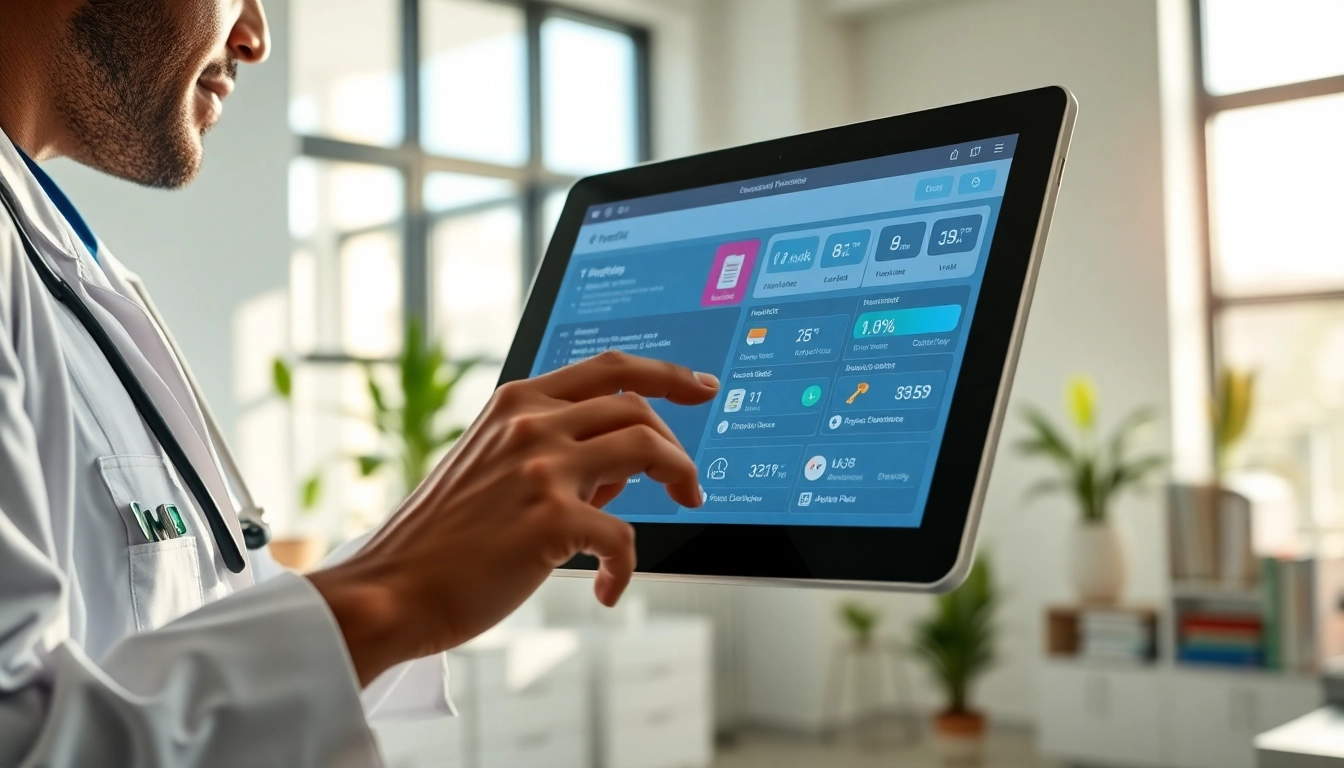Understanding E-Prescribing: An Overview
What is E-Prescribing?
E-prescribing, or electronic prescribing, is the digital generation and transmission of medication prescriptions from healthcare providers to pharmacies. This system transforms the traditional paper-based prescription process into a seamless electronic experience that enhances efficiency and accuracy. Utilizing secure technology, e-prescribing enables doctors to send prescriptions electronically, eliminating handwriting errors, reducing patient wait times, and streamlining the medication fulfillment process.
Benefits of Using E-Prescribing Apps
The best eprescription apps offer a multitude of benefits that can significantly improve patient care and medical practice efficiency:
- Improved Safety: E-prescribing significantly reduces the risk of medication errors caused by unclear handwriting or misunderstandings about medication instructions.
- Enhanced Efficiency: Prescriptions can be sent directly to pharmacies, speeding up the dispensing process and decreasing wait times for patients.
- Patient Convenience: E-prescribing allows for real-time processing of prescriptions, meaning patients can receive their medications more quickly.
- Cost Savings: By reducing the need for paper and manual handling, e-prescribing can lower operational costs for healthcare practices.
- Access to Patient History: Medical practitioners can quickly access a patient’s medication history, promoting better-informed prescribing decisions.
Common Challenges in E-Prescribing
Despite its numerous advantages, implementing e-prescribing can present challenges. Common issues include:
- Technical Difficulties: Healthcare providers may experience technical challenges, including software malfunctions or difficulties with integration into existing health records.
- Resistance to Change: Not all providers are comfortable with new technology, which can slow the implementation process.
- Security Concerns: E-prescribing systems must be compliant with healthcare regulations, such as HIPAA, to ensure patient data security. Providers may worry about data breaches or unauthorized access.
- Limited Pharmacy Participation: Not all pharmacies are equipped to handle electronic prescriptions, which can hinder a provider’s ability to send prescriptions through an e-prescribing system.
Key Features to Look for in the Best E-Prescription Apps
User-Friendly Interface
Selecting an e-prescribing app with a user-friendly interface is crucial. The application should be intuitive, allowing healthcare providers to easily navigate through the functionalities. A clear layout with well-labeled buttons ensures that practitioners can quickly generate prescriptions without needing extensive training or prior experience.
Integration with Health Records
One of the major advantages of e-prescribing apps is their ability to integrate with Electronic Health Record (EHR) systems. Effective integration allows for seamless access to comprehensive patient information, including medication history and allergies. This capability facilitates more informed prescribing and helps maintain continuity of care.
Security and Compliance Measures
Given the sensitivity of healthcare data, security must be a top priority in any e-prescribing app. Look for applications that utilize encryption protocols to protect data in transit and at rest. Additionally, compliance with regulations such as HIPAA must be ensured to protect patient privacy and maintain trust in the healthcare system.
Comparing the Top E-Prescription Apps
Functionality and User Experience
Not all e-prescribing apps deliver the same functionality. While some may focus solely on prescription generation, others may offer additional features such as medication management, patient communication tools, and analytics. Evaluating user experience is crucial to determine how well the app meets both provider and patient needs.
Pricing Structures
When selecting an e-prescribing app, understanding the pricing structure is essential. Some applications charge monthly subscriptions, while others may have per-prescription fees or initial setup charges. It’s important to analyze the total cost of ownership over time to determine which app is the most economically viable choice for a practice.
Customer Support and Resources
A reliable customer support system is vital for any e-prescribing application. Look for apps that offer responsive technical assistance, training sessions, and user resources to ensure smooth implementation and ongoing usage. Knowledgeable support can assist providers in overcoming challenges associated with technology integration.
Implementing E-Prescribing in Your Practice
Steps for Successful Implementation
Implementing e-prescribing requires careful planning and execution. Here are essential steps to ensure a successful rollout:
- Assess Current Needs: Evaluate your practice’s current prescribing processes, identifying areas that could benefit from e-prescribing.
- Choose the Right Software: Select an e-prescribing app based on the criteria discussed previously, ensuring it aligns with your practice’s specific needs.
- Engage Stakeholders: Involve relevant team members in the decision-making process for buy-in and feedback on software choices.
- Plan for Training: Organize training sessions for healthcare staff to familiarize them with the new e-prescribing system and its functionalities.
- Monitor Implementation: After going live, closely monitor usage, collecting feedback from staff and patients to identify any issues or areas for improvement.
Training Medical Staff
A comprehensive training program is critical for ensuring successful e-prescribing implementation. Training should not only cover how to use the software but also emphasize the benefits it brings and how it affects patient care. Encourage questions and provide ongoing support as staff adapt to the new system.
Evaluating Performance and Feedback
After implementation, regularly evaluate the performance of the e-prescribing app and solicit feedback from users. Monitor metrics such as prescription errors, time spent on prescribing, and patient satisfaction. Utilizing this data can guide further training and identify potential upgrades to improve the overall prescribing process.
Future of E-Prescribing: Trends to Watch
Advancements in Technology
The future of e-prescribing is being shaped by rapid advancements in technology. Innovations such as artificial intelligence (AI), machine learning, and blockchain may enhance the efficiency of prescription management, providing predictive analytics for better decision-making and security improvements for patient data.
Regulatory Changes Affecting E-Prescribing
As the healthcare landscape evolves, so too will the regulations surrounding e-prescribing. Staying informed about potential changes in healthcare policy will be critical for practitioners as they adapt their practices to meet new requirements, ensuring they maintain compliance while optimizing patient care.
Patient Engagement and Experience
As e-prescribing continues to grow, involving patients in the process will be crucial. Enhanced patient engagement strategies can improve adherence to prescribed medications and foster communication between healthcare providers and patients. As apps evolve, features that promote patient participation will enhance overall healthcare experiences.



